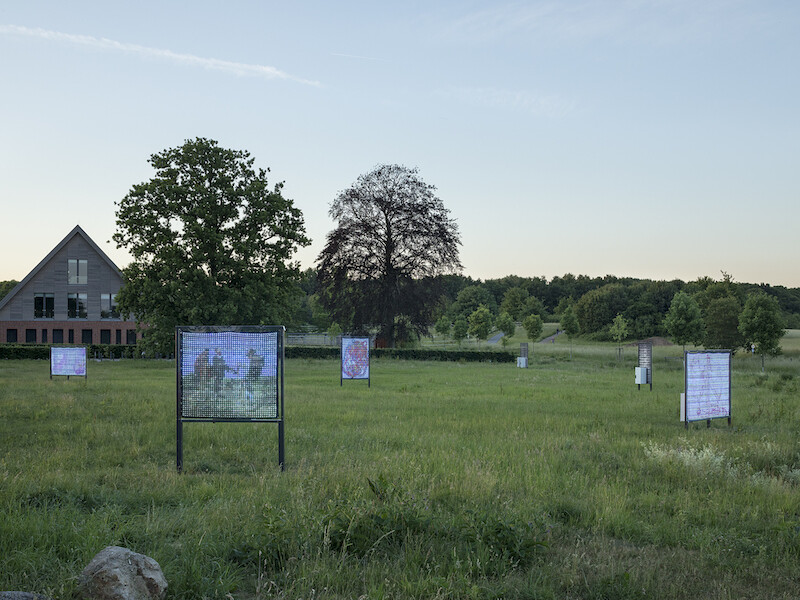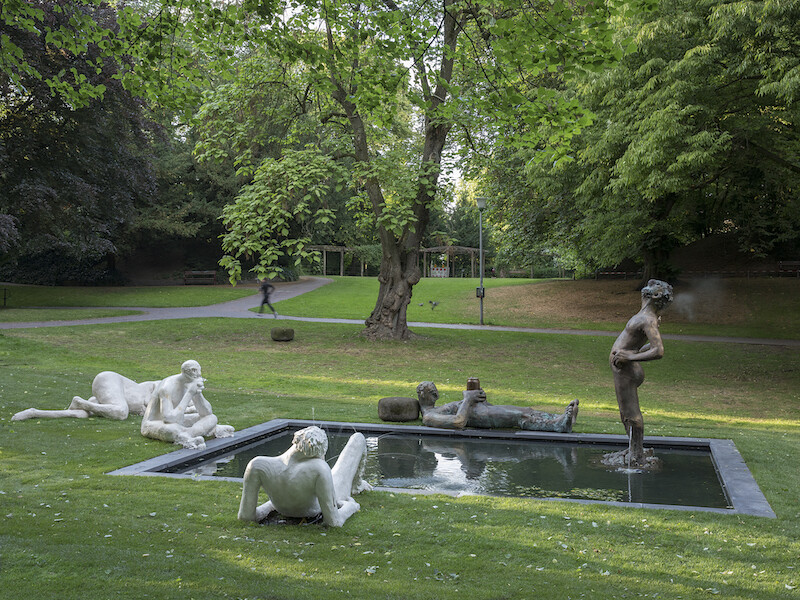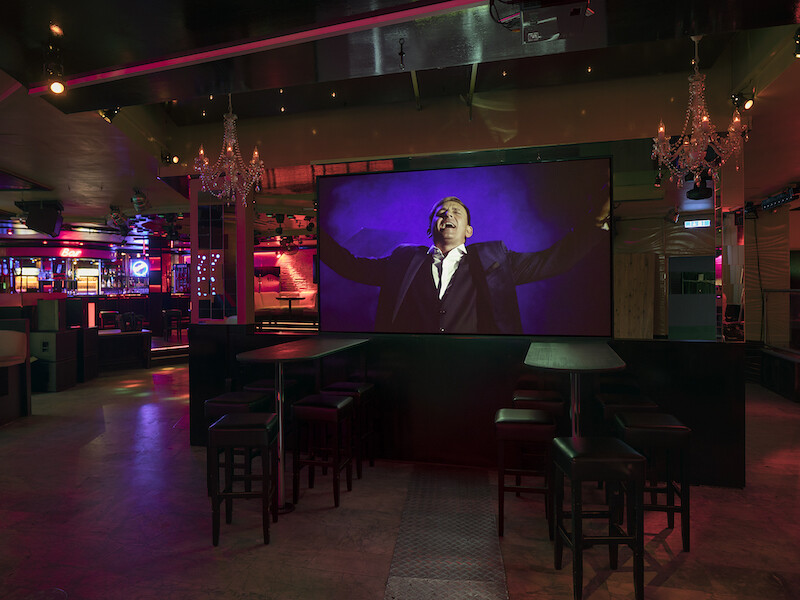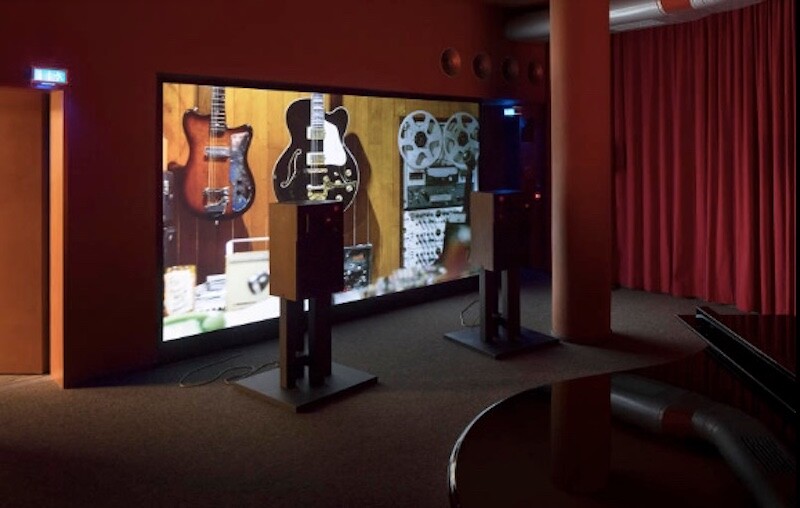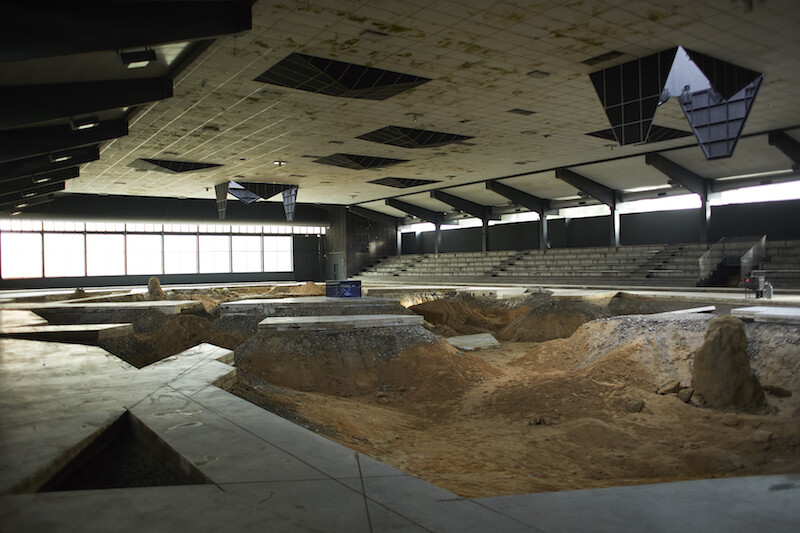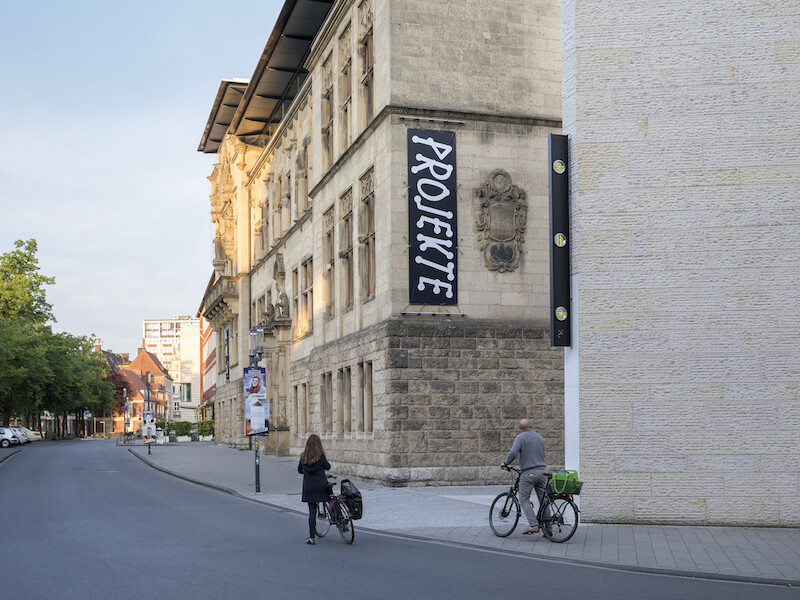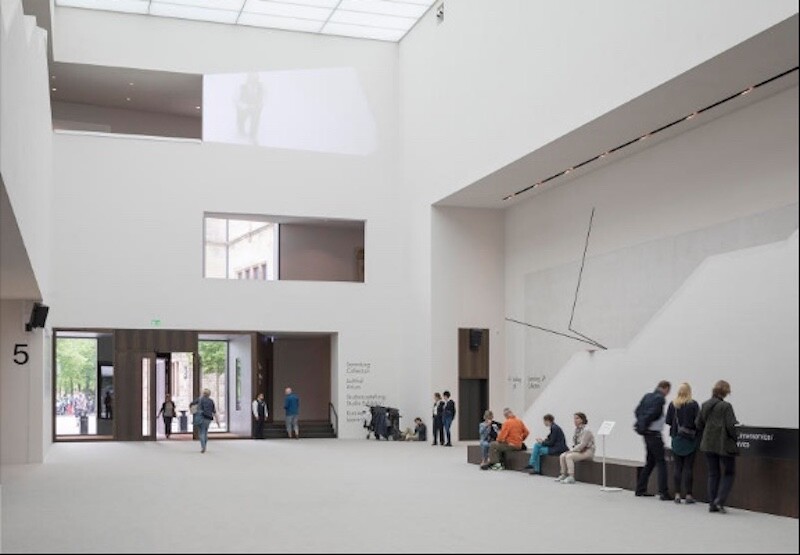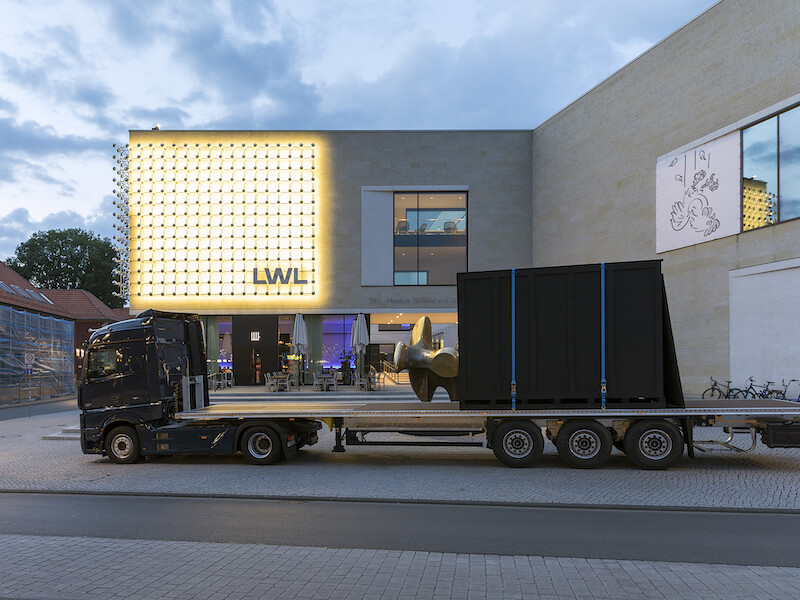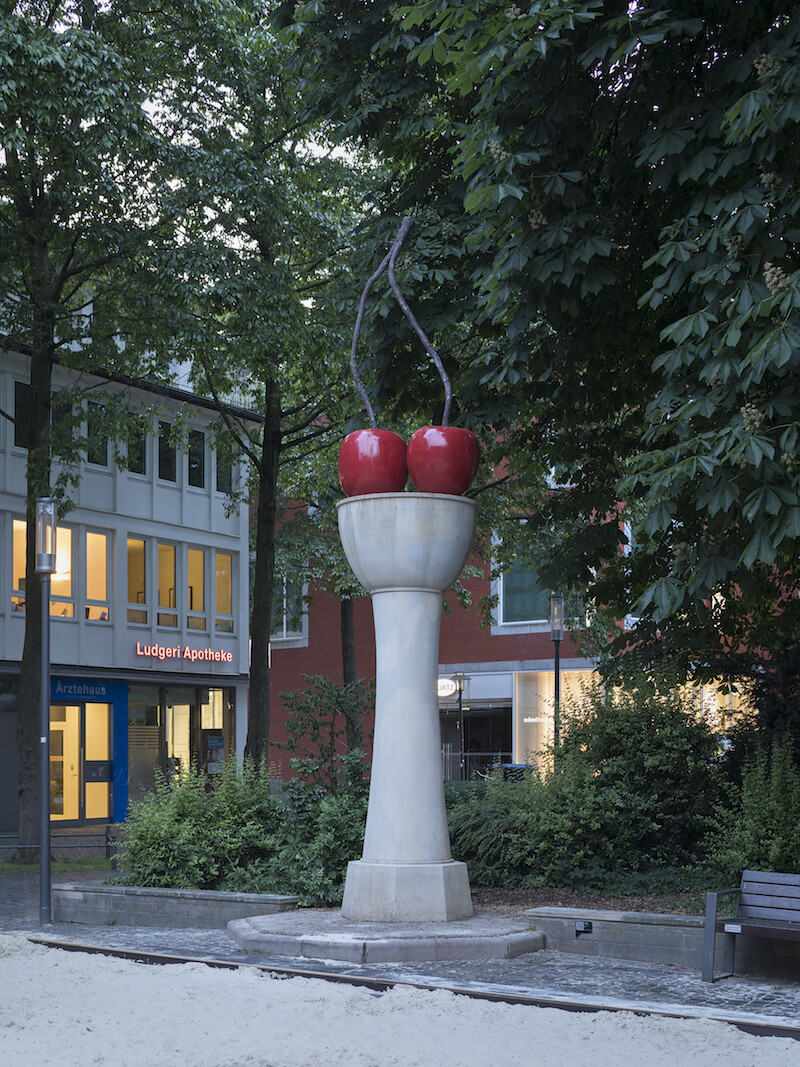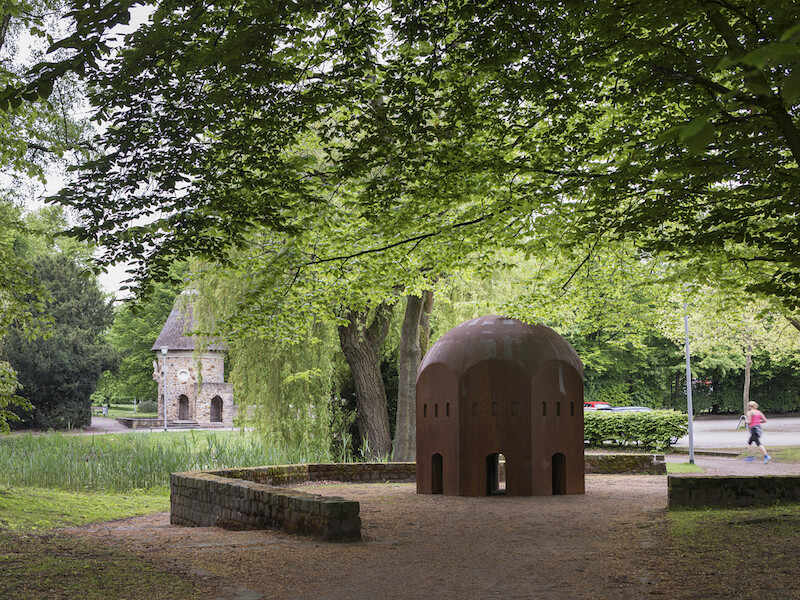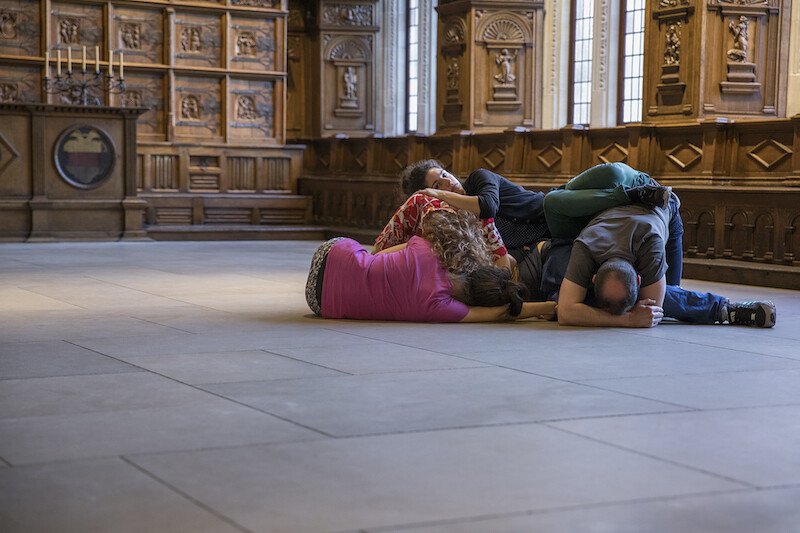Now half a century old, the decennial public art exhibition Skulptur Projekte Münster has unquestionably grown up. The first exhibition featured only male artists while now almost half of the participants are women; a retrospective exhibition of Michael Asher’s photography at Skulptur Projekte Münster—the artist participated in every edition from its inauguration in 1977 to 2007—is taking place at the LWL-Museum für Kunst und Kultur; a series of newspapers (Out of Body, Out of Time, Out of Place) were published in the run-up to the opening; and a research publication on the history of the institution is scheduled for 2019.
The curators of this fifth edition—Britta Peters, Marianna Wagner, and co-founder Kasper König—have organized a non-thematic exhibition in 35 locations around Münster and the neighboring city of Marl. Add to that the 36 existing projects from previous editions—with works by Bruce Nauman, Claes Oldenburg, Donald Judd, and Rosemarie Trockel among them—and it is possible to trace a 50-year history of public sculpture, beginning with the placement of static monuments into the landscape and evolving to encompass digital media alongside participatory and performance art. While the monumental works mark the physical terrain, those of an ephemeral nature are lodged in the collective memory: this year’s press conference, for instance, took place at the Municipal Theater where, ten years ago, Elmgreen and Dragset staged their play Drama Queens about the history of modern sculpture.
The opening remarks at the press conference were followed by a short video introducing Michael Smith’s contribution, Not Quite Under_Ground (2017), a tattoo parlor for visitors aged 65 and over. With an aging population accounting for the majority of cultural tourism in the city, Smith invited friends and colleagues to design tattoos, thus expanding the number of artists participating in the show as well as the exhibition’s reach and legacy. This diffusion of images and messages via the bodies onto which they are indelibly inked might, indeed, mark the latest stage of Skulptur Projekte Münster’s expansion of the field of public sculpture.
Ei Arakawa’s Harsh Citation, Harsh Pastoral, Harsh Münster (2017), located in a field at the southern end of Lake Aa, consists of seven LED paintings based on works by Gustave Courbet, Nikolas Gambaroff, Jutta Koether, Joan Mitchell, Amy Sillman, Reena Spaulings, and Atsuko Tanaka. Reminiscent of billboards, the pixelated digital images are hung in Plexiglas frames the size of the original paintings. On their reverse, loudspeakers mounted on cardboard and dyed fabric play original compositions by Arakawa, Christian Naujoks, and Dan Poston. Rendered in a style akin to the lo-tech aesthetics of the electronic paintings, the lyrics of these songs (printed on labels beside the speakers) address the implications of the works’ dual existence as physical objects and digital images.
A desire to disrupt the comfortable idyll of Münster can also be detected in the sculptural arrangement Sketch for a Fountain (2017) by Nicole Eisenman. Questioning normative concepts of body and sexuality, this queer Arcadia is situated on a park lawn and features five oversized bronze and plaster works grouped around a rectangular pool, alternately suggesting bohemian leisure and public disorder. Bárbara Wagner and Benjamin de Burca’s new film Bye Bye Deutschland (2017) is presented as a double-sided projection in the city’s iconic Elephant Lounge nightclub. The artists collaborated with local Schlager music singers Markus and Steffi, who perform songs by German folk musicians Helene Fischer and Udo Jürgens. While Markus is seen singing in the Preussenstadion, the camera follows Steffi into Rosemarie Trockel’s hedge sculpture on the shore of Lake Aa (Less Sauvage than Others, 2007), before she reappears to sing at the Botanical Gardens and finally in a duet with Markus in a local television studio. Weaving together oral history with documentary footage, the film benefits from its placement within an existing architecture of correspondingly kitsch aesthetics.
At the Public Library, behind the CD and gaming section, Gerard Byrne presents his new video installation In Our Time (2017). Set in the Reagan/Brezhnev era, it features a US radio anchorman delivering the weather forecast and introducing a music program. As the camera moves meticulously around his studio—capturing the details of his “Don’t Mess with Texas” mug and a band setting up for a live recording—the protagonist introduces his station: “CGBS, where you’re never more than one minute away from music—right here on the dial.” Exemplifying Byrne’s interest in music history, quotation, and interpretation, In Our Time is characterized by its unspecified duration. Different versions of the same studio program flow into one another, evoking viewers’ memories of radio listening.
Pierre Huyghe’s large-scale installation After ALife Ahead (2017) is situated in a former ice rink. By sawing open the concrete flooring, the artist has created a landscape of islands and valleys populated by peacocks and beehives, among other species. A culture of cancer cells is kept in a black box at one end of the hall, upon which the influence of the environment can be measured. An aquarium placed center stage contains an assemblage of concrete slabs resembling Caspar David Friedrich’s Das Eismeer (The Sea of Ice, 1823/1824), painted during a period of little success for the artist and alluding to failure. While the assemblage in the tank allegorizes political insecurity, ecological disaster, and apocalypse, perhaps it also creates the space for new beginnings.
In 1997 John Knight proposed modulating the streetlights in Münster’s city center to consider the relationship between institutional art and public life. His 2017 work, In Situ, consists of a spirit level attached to the façade of the recently renovated LWL-Museum für Kunst und Kultur. In the museum’s lobby, Nora Schultz has covered the marble floor with a pristine white carpet that will record the marks of its visitors. Also as part of Pointing their fingers at an unidentified event out of frame (2017) the artist has relocated Olle Baertling’s sculpture YZI (1969) from its iron plinth near Lake Marl and attached it to the museum’s staircase railings. Video projections at both ends of the foyer, meanwhile, show drone footage of the same space, its buzzing sounds echoing through the hall. In front of the museum, a collaboration between Cosima von Bonin and Tom Burr (Benz Bonin Burr, 2017) consists of a truck carrying a shipping crate parked beside a Henry Moore bronze, threatening its imminent removal. The scene is watched over by the Ludger Gerdes’s yellow neon Angst (1989), a timely analogy to Banu Cennetoğlu’s text piece Being Safe is Scary (2017), currently mounted above the entrance of the Friedericianum in Kassel as part of Documenta 14.
Münster—a shopping paradise for a well-off white population, a clean, safe, green, and quiet Disneyland—is contrasted with the post-industrial decline of the nearby city of Marl. Founded in 1936, the city was made wealthy by coal in the mid-twentieth century and is now in decay, though its brutalist concrete architecture is preserved wherever possible. Having loaned works by Gerdes and Baertling from its museum collection to Münster, the city hosts pieces such as Richard Artschwager’s untitled bicycle stand monument, which was produced for the 1987 edition and is normally stationed in front of Münster Castle. Thomas Schütte has created a twin column for his famous, and recently relocated, Kirschensäule (Cherry Pillar, 1987). This watermelon in three slices is also sited—as the Münster original was—in a parking lot. Dominique Gonzalez-Foerster brings a selection of 11 miniature replicas of her Roman de Münster (2007) to the ground floor glass box at the Museum Marl, where they are installed in a formation corresponding to their original locations in Münster. Downstairs at the museum is an exhibition of models for realized and unrealized projects from the history of the Skulptur Projekte, combining works such as Mike Kelley’s Petting Zoo (2007) with lesser known proposals including a roomful of models for Friedrich Gräsel’s Gabelung von zwei Hauptrichtungen (Bifurcation of two main directions, 1969) and Modell einer Kreuzung (Model of a street crossing, 1969/1970).
The increased employment of video and performance at Skulptur Projekte Münster reflects a paradigm shift in the conceptualization of sculpture. Alexandra Pirici’s Leaking Territories (2017), displayed at the historic City Hall where the Treaty of Münster (1648) ending the Thirty Years War was signed, is a case in point. Its six performers situate the viewer in space and time by narrating the historical or geographical distance separating, for example, China’s expanding manmade island in the South Sea or the fall of the Warsaw Ghetto. The visitor is serenaded by their chants: Roam more, We’re on nowhere, emit time (in English), The perfect situation is one in which one transcends oneself (in Mandarin), and See the mystery of tomorrow (in Kurdish). Some of Pirici’s aphorisms inspire, while others fall flat.
Skulptur Projekte Münster has over the course of its history reflected, and fostered, the transformation of sculpture as a medium. Its fifth edition is most effective where artists and organizers have installed works within context-specific architectures. This dialogue between work and site has resulted in an exhibition that continues to think about art historical developments while also opening up new possibilities of acting within the endangered public sphere.

